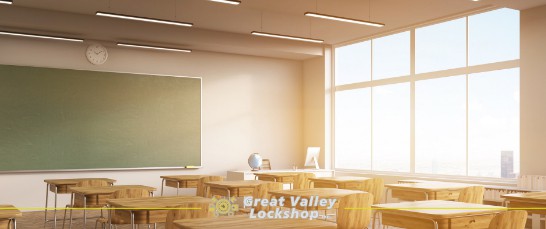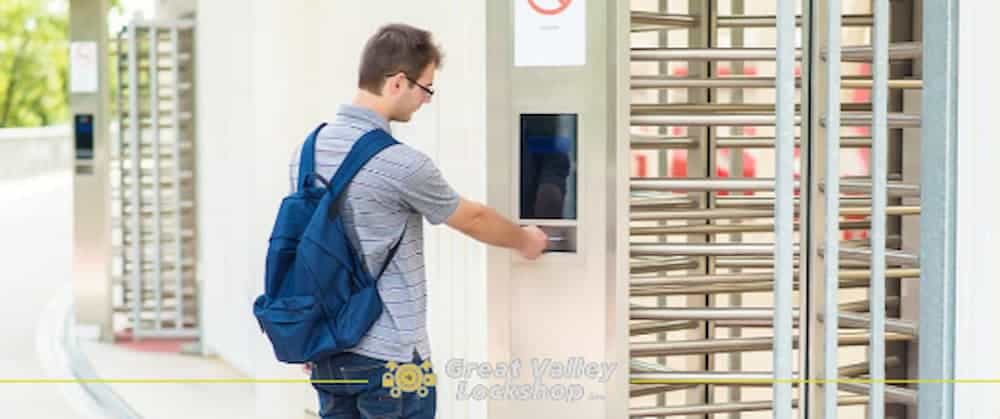
Safety Glazing: What Is It and When Is It Required?
Why Safety Glazing Is Replacing Wired Glass
Whether it’s home, school, or office, we all want to ensure our surroundings are as safe as possible. One aspect that’s been garnering growing attention is the safety of wired glass – a once-popular type of glass extensively used due to its budget-friendliness and fire-resistant properties. However, concerns about its fragility and impact on safety have led to an incremental shift toward safety glazing. This article aims to shed light on why safety glazing is replacing wired glass and explore what it entails, the various types are available, and its recommended applications.
Wired glass was once widely used in schools and universities due to its cost-effectiveness and fire-resistant properties. However, it has been found to be less sturdy than regular glass and poses potential harm upon impact. Contrary to common belief, the wire in the glass is not intended for safety or security, but merely to hold the glass during a fire. Wired glass tends to break more easily than other glass types and can lead to significant injuries due to the jagged pieces held by the wire.
Because of these issues, many institutions are now recognizing the risks associated with wired glass and are taking steps to address them. They are educating students and parents about these risks and gradually replacing or modifying existing wired glass, especially in areas where students are frequently exposed. With changes in the International Building Code, traditional wired glass is no longer exempt in fire doors or other high-impact areas. It is considered unsuitable for schools or any places where human impact is likely.
Today, a number of manufacturers offer clear, wire-free safety glazing products that retain fire-resistance for 20 to 45 minutes. Given the specific requirements of building codes, it is advisable to consult with manufacturers about a product’s fire and safety ratings.
Related article: New Technology Aims to Increase School Security.
What is safety glazing?
Safety glazing is a method that makes glass tougher and safer when broken, reducing the risk and potential harm of shattered pieces. It’s commonly found in commercial setups, automobiles, bathroom settings, and various windows or glass doors.
What types of safety glazing is available?
Safety glazing comes in different forms, each providing its own benefits.
The most common, tempered safety glass, offers cost-effectiveness and strength up to five times greater than regular glass. It shatters into tiny pieces when broken, reducing injury risk, much like car side windows.
Laminated glass, made of two glass layers with a plastic sheet in-between, prevents large sharp pieces from causing injury if broken. It’s also a deterrent for intruders, as the plastic layer is tough to penetrate.
Acrylic and plastic glazing, while less expensive and prone to yellowing and scratching, are highly durable. A good example is Lexan, a product by GE. It provides the clarity of glass, the resilience of heavy-duty plastic, and is almost unbreakable.
Other types include heat-strengthened laminated glass, commonly found in high-rise buildings. It sticks to the bonding material when broken, preventing falling shards.
Lastly, tempered laminated glass is formed from two pieces of tempered safety glass. It breaks into small, dull particles, which stick to the bonding material, thus reducing the likelihood of injuries.
These safety glazing types are essential in various applications, including shower rooms, facade spandrels, glass tables, and balustrades, as well as building doors and windows.
What types of applications is glazing recommended for?
Safety glazing is a modification done to certain types of glass, such as windows and shower doors, to make them less prone to shattering and safer when broken. This feature is beneficial for commercial applications as it lowers the likelihood of breaking and, thus, the risk of injuries from shattered glass. The most common applications of safety glass are in schools, universities, public buildings, hospitals, healthcare facilities and various other glass fittings like doors, windows, and storefronts.
On the other hand, the PVB within laminated glass keeps broken shards in place on impact, preventing shattering and allowing the glass to bend slightly, making it more resilient than tempered glass. Laminated glass also provides better noise reduction and superior shielding from ultraviolet light. It’s highly valued in commercial applications like retail stores, office buildings, and glass storefronts, where its strength and added benefits are highly needed.
Related article: What Commercial Window Film Can Do for Your Building.
When is safety glazing required?
Safety glazing is required for most commercial applications that are often considered risky. These include doors, especially those with fixed or movable glass panels, and windows that have a large surface area. Also, any glass within 24 inches of a door border and located less than 60 inches above the floor should be safety glazed.
In houses and commercial places, safety glazing is implemented in showers, hot tubs, saunas, and poolside areas where there is glass within 60 inches from the floor. This extends to staircases, ramps, and the landing areas at the bottom of the stairs, where glass should be safety glazed if it’s within 60 inches of the walking surface.
Glass railings, fences, and enclosures, such as in and around indoor and outdoor pools, are also areas where safety glazing is advised. Any fixed, revolving doors, or swing glass in doors and sliding panels, including closet doors and storm doors, and even glass in fire-rated door assemblies, makes them safer with safety glazing.
Remember, safety glass codes aren’t only applicable to new builds but also old and renovated to ensure everyone’s safety. Consequently, it’s compulsory to have safety glazing in places with large glass panes, particularly when they’re located low to the floor or close to a walking surface.
Related article: the Dangers of Classroom Barricade Devices and Lockdown Devices.
Contact GVLock for Commercial Services
The transition from wired glass to safety glazing is a testament to our progressing understanding of safety in our built environments. With its better resistance to impact, its ability to shatter into less harmful pieces, and its wide range of applications, safety glazing is rapidly becoming the new norm. However, like any safety related change, this transition needs a professional touch. That’s why it is highly recommended to contact a commercial locksmith while considering replacing your wired glass with safety glazing. A knowledgeable and experienced professional will provide you with the most accurate information tailored to your specific needs, ensuring you make the most informed decisions.
Resources:
- Building Code Blog, “Safety Glass/Glazing – A Quick Reference Guide,” February 2023.
- Lori Greene, Allegion: iDigHardware; “Traditional Wired Glass in the News,” January 2013.
- SaftiFirst, “Safe Solutions to Wired Glass,” October 2014.








